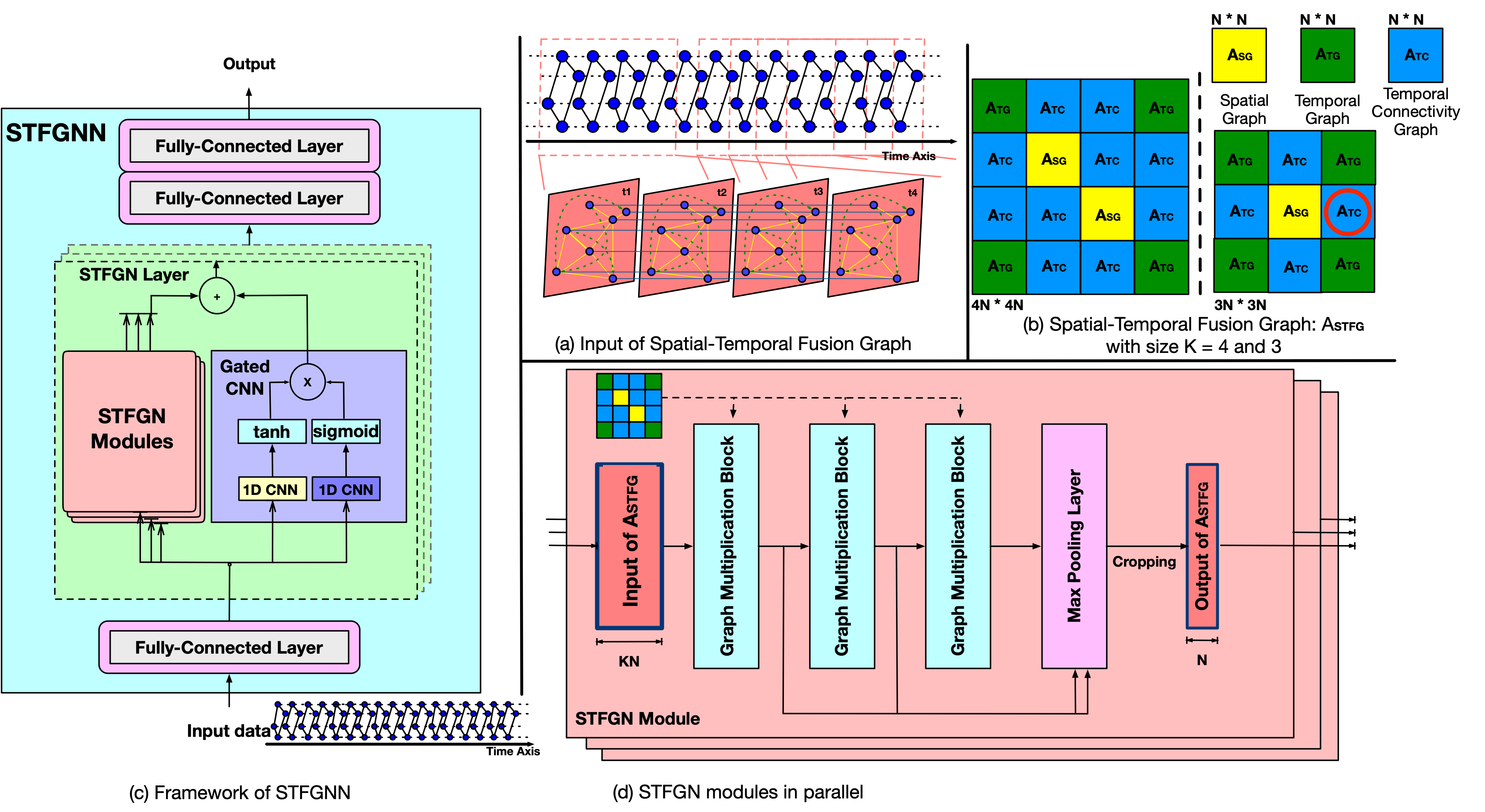Spatial-Temporal Fusion Graph Neural Networks for Traffic Flow Forecasting
Spatial-temporal data forecasting of traffic flow is a challenging task because of complicated spatial dependencies and dynamical trends of temporal pattern between different roads. Existing frameworks typically utilize given spatial adjacency graph and sophisticated mechanisms for modeling spatial and temporal correlations. However, limited representations of given spatial graph structure with incomplete adjacent connections may restrict effective spatial-temporal dependencies learning of those models. To overcome those limitations, our paper proposes Spatial-Temporal Fusion Graph Neural Networks (STFGNN) for traffic flow forecasting. SFTGNN could effectively learn hidden spatial-temporal dependencies by a novel fusion operation of various spatial and temporal graphs, which is generated by a data-driven method. Meanwhile, by integrating this fusion graph module and a novel gated convolution module into a unified layer, SFTGNN could handle long sequences. Experimental results on several public traffic datasets demonstrate that our method achieves state-of-the-art performance consistently than other baselines.
PDF Abstract








